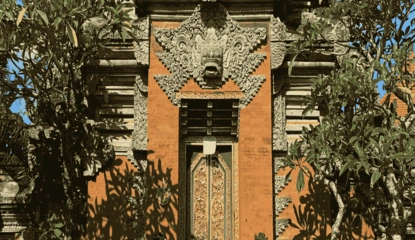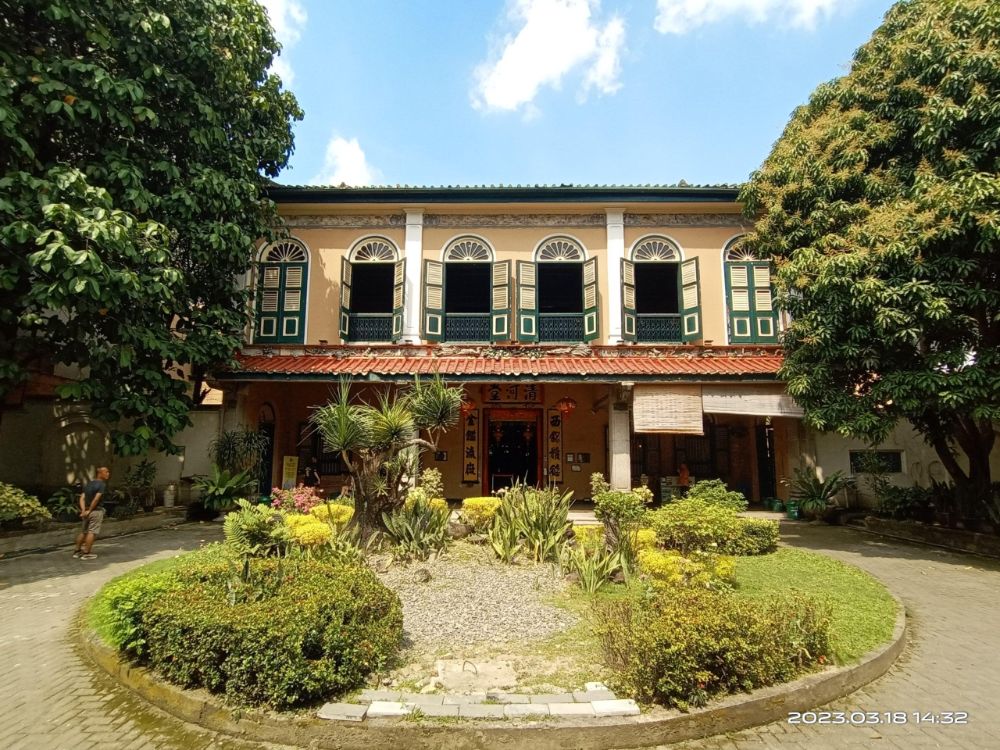The Hasapi, a traditional two-stringed lute, lies at the heart of the rich and evocative musical heritage of the Toba Batak community in North Sumatra, Indonesia. Widely regarded as a central instrument in the Batak Gondang ensemble, the Hasapi produces melodious, harmonic tunes that complement the percussive and wind instruments in ceremonies and traditional performances. This simple yet soulful instrument embodies the Batak people's love for music and storytelling, serving not just as a musical device but as a symbol of cultural expression and identity.
Origins and Cultural Significance of the Hasapi
The Hasapi is deeply rooted in the rich history of the Toba Batak people, one of the ethnic subgroups of the Batak community living around Lake Toba, the largest volcanic lake in the world. Traditionally, music plays a crucial role in the Batak way of life, particularly in rituals, storytelling, and social gatherings. The Hasapi is a central figure in these cultural traditions.
1. Ceremonial Importance:
In Toba Batak culture, the Hasapi is often played during traditional ceremonies, such as Gondang performances, where it accompanies dances, prayers, or expressions of gratitude. These events can include weddings, funerals, harvest celebrations, and other key moments in Batak communal life.
2. Spiritual Connection:
The lyrical sounds of the Hasapi evoke a sense of spirituality. Within Batak culture, music is seen as a way to connect with ancestors and the divine. The Hasapi, with its calming and immersive melodies, is often considered a bridge between the human and spiritual realms.
3. Traditional Storytelling:
The Hasapi may also accompany Batak oral traditions, where stories of ancestors, myths, and cultural values are passed down through generations. Its melodies enhance the narrative, creating an audio-visual experience steeped in tradition.
Construction of the Hasapi
The Hasapi’s compact and minimalist design allows it to produce enchanting sounds despite its simplicity. Constructing the Hasapi requires a deep knowledge of craftsmanship combined with respect for nature, as the instrument is made from locally sourced materials.
1. Materials:
The Hasapi is traditionally carved from a single piece of hardwood, often sourced from jackfruit trees, which are known for their durability and resonant qualities. Another crucial part, the strings, is traditionally made from natural fibers, although modern versions often use metal or nylon strings for durability and sound quality.
2. Structure:
The instrument consists of three main components:
- Body (Resonator): A hollowed-out, boat-shaped body that amplifies the sound produced by the strings. It features intricate carvings, often reflecting Batak cultural motifs.
- Neck: A long and slender neck where the strings are pressed to change pitch. The neck gives the Hasapi its lute-like appearance.
- Strings and Tuning Pegs: The Hasapi has two strings, which are stretched over the body and tuned using wooden pegs. Each string produces specific notes that combine to form the instrument's harmonic base.
3. Design and Decorations:
The Hasapi is often intricately decorated with traditional motifs, such as geometric patterns or symbolic carvings representing Batak cosmology. These aesthetic features give the Hasapi not only a functional purpose but also an artistic identity, reflecting the Batak people's connection to their cultural heritage and environment.
Playing the Hasapi
The Hasapi is relatively simple to play, requiring the musician to pluck its strings with a slim wooden plectrum or their fingers. The player uses their left hand to press the strings along the neck, creating different notes, while their right hand plucks the strings to produce the sound. The resulting melodies are soft, rhythmic, and soothing, perfectly complementing the more forceful percussion and wind instruments in the Gondang orchestra.
The playing technique is passed down through generations, with experienced musicians often teaching younger Batak members, ensuring the sound of the Hasapi continues to resonate within the culture.
The Role of Hasapi in Gondang Performances
The Hasapi is one of the core instruments in Gondang Sabangunan, the traditional Batak musical ensemble performed during special ceremonies. Its role in the ensemble is pivotal, providing a melodic foundation while balancing the energetic rhythms of the taganing (drums) and the haunting tones of the sarune bolon (a wind instrument).
1. Melodic Backbone:
The Hasapi’s harmonic sound serves as the musical backbone of the Gondang ensemble. By providing continuous melody or patterns, it sets the tonal mood that guides the performance.
2. Accompanying Dance:
When the Hasapi is played alongside Gondang music, it enhances the rhythmic flow of the Tor-Tor dances performed during ceremonies. The Tor-Tor dancers move in harmony with the Hasapi's serene notes, creating an elegant and spiritual performance.
3. Cultural Expression:
The Gondang performances, with the Hasapi leading the melodies, are a medium for expressing Batak identity, hierarchy, and traditions. Whether invoking blessings, honoring ancestors, or celebrating joyful life events, the Gondang—and the Hasapi—give voice to the Batak people.
The Hasapi in Modern Times
While the Hasapi is deeply rooted in tradition, it is also finding new relevance in the modern world of music and art.
1. Preservation Efforts:
- The Batak community, cultural organizations, and educational institutions are working to preserve the making and playing of the Hasapi.
- Traditional music festivals and cultural workshops in places like Lake Toba showcase the Hasapi, helping younger generations learn about its significance.
2. Global Stage:
- The enchanting sound of the Hasapi has gained interest beyond North Sumatra. Musicians and ethnomusicologists around the world have begun incorporating the Hasapi into mixed-genre music compositions, bringing traditional Batak sounds to global audiences.
3. Evolution of Design:
- While traditional Hasapi designs remain prominent, some modern versions have adopted metal strings, allowing musicians to experiment with new sounds while maintaining the instrument's essence.









